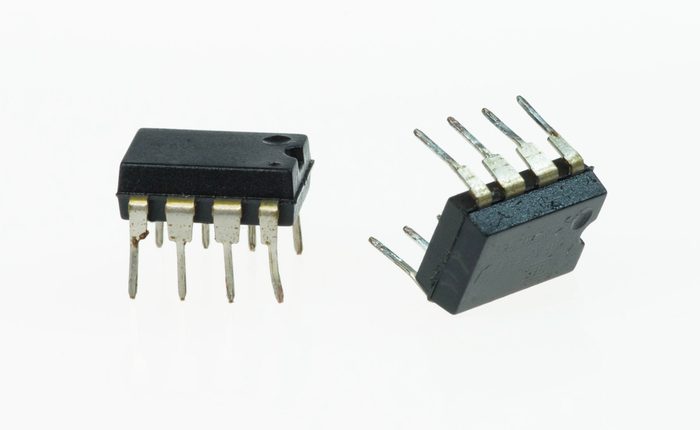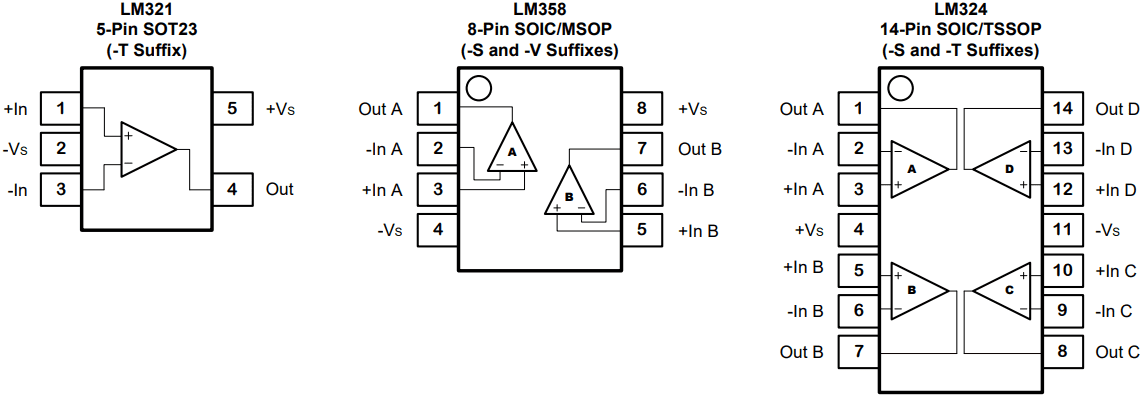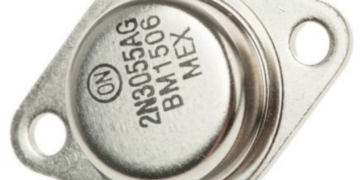
Every engineer remembers the classic LM356 op-amp from their electronics lab classes.
Looking for an op-amp for your next system? Every engineer is likely familiar with the LM358 and the specifications in the LM358 datasheet. This common op-amp has plenty of uses in DC and low-frequency AC applications. There are many other op-amps that provide similar specifications, but more advanced applications require an op-amp with larger gain-bandwidth product, common-mode noise rejection, power supply noise rejection, and other specifications.
If you need the LM358 datasheet, you’ll need to choose from one of many variant components, and a components search engine can help you find and compare different LM358 variants. Here are some of the common variants of the LM358 and some suitable replacement op-amp components for your analog system.
LM358 Datasheet and Specifications
The LM358 op-amp is very flexible for low-voltage AC applications and moderate voltage DC applications. Every electrical engineer is likely familiar with the DIP package footprint for an LM358, but LM358 variants are also available as surface-mount components with gullwing or flat package mounting styles. This gives designers a range of form factor options for DC and analog systems.
If you’re looking for a copy of the LM358 datasheet, it’s important to note that multiple manufacturers produce this component. Each manufacturer produces slightly different variants of this component, and each has very similar specifications. Some of these components have identical pinouts and package sizes to allow for compatibility between different manufacturers. Here is a short summary of the important LM358 specifications:
- Maximum gain: up to 200,000
- Gain-bandwidth product: 1-1.2 MHz
- Common-mode rejection ratio (CMRR): up to ~65 dB
- Power supply rejection ratio: up to ~60 dB
- Supply voltage: Anywhere from ~2.5 V to ~30 V
- Output short-circuit current: ~100 mA
Other specifications can span broad ranges, and designers should consult their LM358 datasheet. If these specifications don’t meet your needs, or you need more than two channels in your system, there are some alternatives to the popular LM358 op-amp.
Alternatives to LM358 Op-amps
Although the LM358 is extremely common and most engineers are familiar with its limits, there are plenty of other op-amps you can use for different applications. If you need to use an LM358, but you want a different number of channels, you can use the LM321 (single-channel) or LM324 (quad-channel). The pinouts for common variants of these three components are shown below.

LM321, LM358, and LM324 op-amp pinouts.
Just like the standard LM358, these multi-channel variants also have slight differences in electrical ratings, but they all generally offer the same performance specifications as standard LM358 op-amps. Other op-amps with similar specifications include LM2904 (dual channel), LM2902 (quad channel), LM158/LM258, LM741; either of these can be used as a replacement for LM358 or LM324, respectively. You can find a great comparison of specifications for some of these op-amps in this document from Rohm.
High-Frequency Op-amp Alternatives
For advanced products that operate in the MHz and GHz regime, the primary specification that needs to change is the gain-bandwidth product. If you’re operating at high voltage or power output, you will need to find an amplifier that can accommodate these specifications. Op-amps are available with gain-bandwidth products up to ~400 MHz. These components are suitable for RF mobile, satellite, navigation, and weather systems, but going to higher frequencies requires a more specialized amplifier with gain-bandwidth products reaching dozens of GHz. Some of these alternative components are also ideal for low-noise applications and offer CMRR values reaching 160 dB.
Specialized multi-stage amplifiers are available from a number of RF components manufacturers. For radio transmission, GaAs or SiC power amplifiers are normally used as they provide high efficiency up to several GHz. Working at mmWave frequencies requires GaN-on-SiC amplifiers, particularly in mobile analog front ends. Whether you need to select a basic LM358 op-amp or a specialized RF amplifier, you’ll save yourself a significant amount of time when you use the right components search engine.
Find Your Amplifier with a Components Search Engine
Selecting an amplifier for DC, AC, or RF applications is only half the battle. The next task to complete before designing a system around your amplifier is to find CAD and sourcing data for your amplifier. Here’s what a components search engine can give you when you’re ready to start your design:
- CAD models. You’ll need schematic symbols and a PCB footprint for your component. Specialized mobile and IoT products often need to have unique enclosures, and you’ll need 3D CAD models to work with your board in MCAD programs or in 3D ECAD editors.
- Specifications and datasheets. If you’re still comparing components or looking for supporting components, you can find datasheets and electrical specifications in search results.
- Simulation models. Some manufacturers will supply SPICE or IBIS models for their components, and the best search engines will give you access to these models.
- Sourcing data. Available stocks, MOQs, lead times, prices, and a list of distributors can be found in a comprehensive search engine.
- Lifecycle status. It’s important to identify in-production, NRND, and obsolete components, especially if you plan to sell your new product at scale and over an extended period.
The image below shows some LM358 search results. You can click into any of these components to find the manufacturer’s LM358 datasheet.

LM358 op-amp variants, prices, and CAD model availability in Ultra Librarian’s search results.
Whether you need to find an LM358 datasheet or source mass quantities of specialized amplifiers, try using the parts search features in Ultra Librarian. You’ll have access to verified CAD models in vendor-specific and vendor-neutral file formats, and you can quickly import these models into popular ECAD applications. You’ll also be able to see up-to-date sourcing information from authorized worldwide distributors. All the component data you’ll find on Ultra Librarian can be accessed at no cost and is verified from component manufacturers.
Ultra Librarian helps you build your component footprint libraries by compiling all your sourcing and component information in one place. Working with Ultra Librarian sets up your team for success to ensure any design is going through production and validation with accurate models and footprints to work from. Register today for free!







